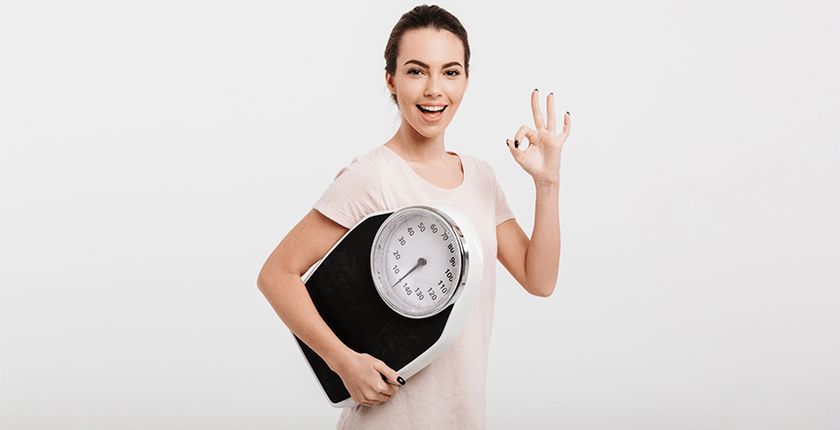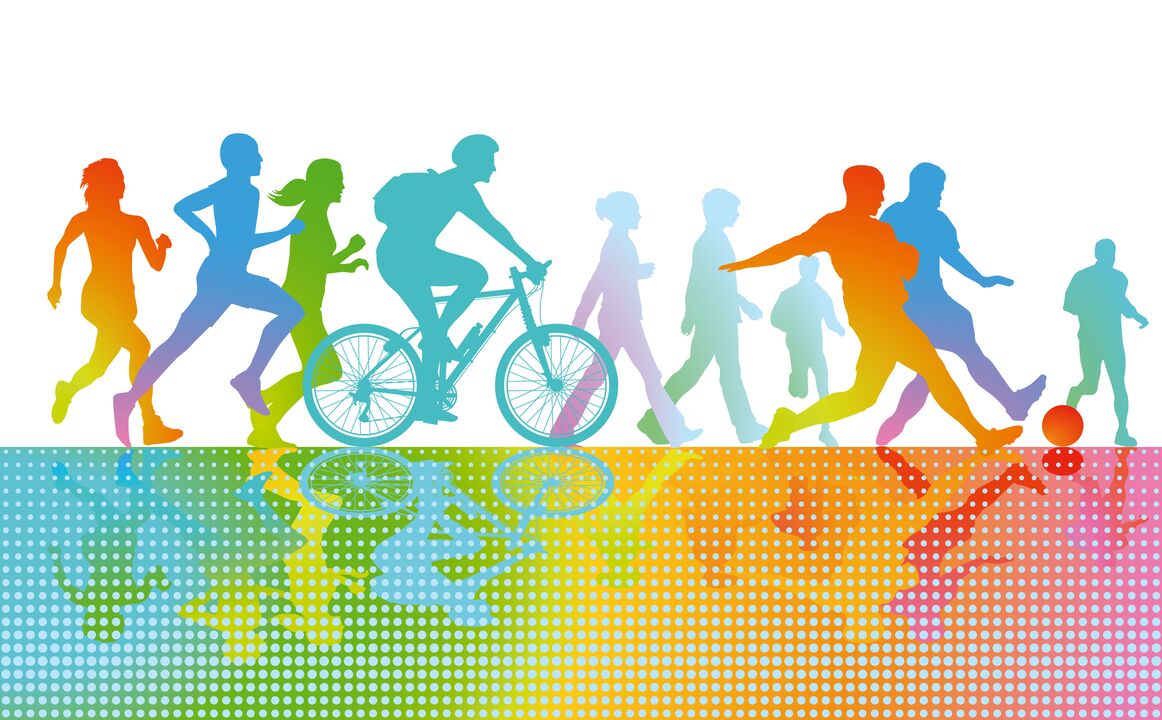
The purpose of this article is to fully understand the problem of excess weight, prioritize the solution of this problem and determine the direction of movement on the path to weight loss. In short, to answer the questionHow to lose weight?»
Is it overweight?
Not everyone has decided to fight extra pounds, they are really superfluous. The subjective assessment of his body is often not confirmed by objective data on the presence of excess weight.
Often, in the pursuit of physical perfection, many manage to conform to a certain image, and everything that departs from it is considered superfluous, and in this case it is enough to correct the figure with the help ofa load on certain parts of the body.
That's why:
Step 1. Calculation by anatomical and constitutional parameters and determination of your status by weight
To diagnose overweight, use the Body Mass Index (BMI), which is recommended by the World Health Organization:
BMI \u003d Body weight (kg) / height (m²).
If, according to the results of the calculations, you fell into the overweight category, you need to understand that while maintaining your usual lifestyle and nutrition in the future, you can already move into the obesity group. Measures to reduce weight should begin immediately.
Step 2. Motivation
Goal to lose weightbasically no different from any other lens. It is a strategic conceptachievement of goals, as well asretain the resultany path must begin precisely with the definition of the goal of this path.
First, we need to separate the concepts of goal and objective. Weight loss is a task that must be solved, it answers the question: "what should be done? ". And the goal of losing weight should answer the question, "Why do you have to start all this? "
In case of weight loss, you can determine the goal by motivation. It must be carried out by the person himself, only then can one count on resistance to hardships and stresses that invariably accompany everyone during the period of weight loss.

Everyone has their own motivation.
- Health. Overweight is above all a threat to health: risk of various diseases of the cardiovascular, respiratory and digestive systems, disorders of the musculoskeletal system, of the genitourinary system, skin lesions, endocrine diseases.
- Development of physical abilities: easier to perform normal daily physical activities (easier to climb stairs, do housework, just walk), the possibility of practicing your favorite sports, outdoor activities, active tourism, etc.
- ANDother purposes, which for many are a serious incentive:
- return to the usual wardrobe,
- clothing style,
- be in the trend of fashion trends,
- be an object of pride for yourself and your loved ones, etc.
When the goal is set, it must be constantly cultivated, so that in times of crisis, when "hands down", and there is a temptation to stop halfway, it plays the role ofambulance to resuscitate the will to win.
Step 3. Find the causes of excess weight and their elimination
You should immediately take into account that it is right to do this under the guidance of a competent medical curator.
The main reason for the appearance of excess weight is that the energy intake from food exceeds its consumption and it accumulates in fat cells (adipocytes). And this can be the result of several factors.
Malnutrition: both in quantitative and qualitative terms
The main thing I would like to draw attention to is that a competent approach excludes rapid weight loss (more than 5 kg per month, ideally 2-3 kg per month).Claims to lose weight in a week are naive and speak of an urgent need for those who ask for them. The long period of accumulation of extra pounds in the body suggests a long-term plan to get rid of them without harm to health.
You can often hear the argument as:I eat little, but I still improve.
If an excess is deposited, it means that it came in excess with food.
The easiest and most effective way to properly assess your usual diet is to keep a food diary for 2 weeks. It should reflect:
- Meal time,
- the volume and composition of the meals taken,
- how much free liquid you drink
- time and amount of alcohol consumed.
For further analysis and work on the development of good eating habits, information on the conditions of food intake (after psychological stress, before and after physical activity) is also useful.
Food diary analysis and dietary adjustments should be made by a nutritionist based on the calculation of the daily needs of a particular person, as this takes into account individual characteristics, physiological characteristics, household stress, use of a car for transport, level of sporting physical activities, etc.
It is important to distribute the energy content of the diet correctly over the day: the most caloric meal should fall on the period of the day with maximum physical activity, when it can be fully utilized.
Common dietary mistakes:
- lack of breakfast
- snacks on the go
- dinners, which in terms of energy value sometimes exceed the daily physiological need.
General recommendations for proper nutrition for weight loss
- A caloric deficit of 500 to 700 kcal/day, or about 30% of the total calculated caloric intake, should be achieved.
The daily energy value should not decrease for women - below 1200 kcal, for men - below 1500 kcal.
Reducing daily calorie intake below these numbers is dangerous, meaningless in the long term, because the quickly lost kilograms alter the metabolism in such a way that the body, in order to self-preserve after the end of dietary tests, begins intensely to restore what has been lost.
- Meals, if possible, should be frequent (every 2. 5-3 hours) in small portions. It is advisable to take the last meal no later than 7: 00 p. m. or, alternatively, no later than 3 hours before bedtime.

Eat slowly, chewing well. In this case, the nutrients received with food have time to "give a signal" to the center of saturation. Eating in a hurry causes the signal for satiety to be received too late, when the stomach is full, that is, the person has already moved.
Japanese and Asian cuisines, in which chopsticks are used to eat, are very revealing in this sense.
First, it's part of their life philosophy, where eating is almost a ritual that affects health and longevity.
Secondly, the sticks do not allow you to take a large part, but as much as a person can chew thoroughly.
In addition, due to this, the meal time increases, and the body manages to receive a signal of satiety just in time - as a result, the feeling of satiety appears after a much smaller portion of the consumed meal than with a fast meal.
- Promotes weight loss and increased water intake- It is recommended to take 500 ml of water before each main meal.
- To exclude unnecessary stimulation of appetite and the work of the digestive organs, stimulating foods should be absent from the diet:strong broths, pickles, pickled, fried foods, spicy seasonings, alcohol.
- Particular attention should be paid to the exclusion of alcoholic beverages., which are high-calorie foods in themselves: the energy content of 100 g of alcohol is 700 kcal, which is approximately equivalent to the energy value of 100 g of butter.
Physical inactivity (sedentary lifestyle)

Physical activity is an important part of achieving the desired energy balance, both during the weight loss period and to maintain the weight after achieving the result.
Weight loss exercises should be:
- dose;
- gradually build
- can be moderate (performed for 1 hour without fatigue);
- can be intense (after 30 minutes of training, fatigue appears).
The Weight Loss Program recommends: 4-5 hours per week of moderate-intensity physical activity or 2. 5-3 hours per week of vigorous-intensity physical activity. Energy consumption at such loads is 2000-2500 kcal.
- Daily walk for 30 minutes. One of the best types of activity for weight loss is interval walking - 2-3 minutes. at the usual pace, then 2-3 minutes. acceleration, then slow down to a normal pace (2-3 minutes). Or run for 15 minutes.
- Sports games for 45 min. (volleyball, basketball, soccer, etc. )
- Five times a week for 1-1. 5 hours - swimming, fitness, aerobics, tennis, etc.
- Classes in the gym with weights to build muscle mass.
It is best to alternate different types of physical activity.
The most effective way to reduce body weight is to lose fat during exercise before breakfast. During daytime and evening training sessions, it is recommended to eat no later than 3 hours before these.
Violation of the endocrine glands
Hormonal disordersare the cause of overweight5-10%case. If the traditional comprehensive weight loss program (healthy diet, physical activity) does not lead to a positive effect, an endocrinologist should be consulted.
The doctor will draw his conclusion based on the data and the results of the examination.laboratory research, which will give information about the function of the endocrine organs (thyroid gland, adrenal glands, gonads, endocrine part of the pancreas).
Based on the information received, the endocrinologist will be able to draw up a plan of therapeutic and preventive measures.
What is important to remember when you start losing weight
- Whoever is on the ground is not a warrior. You need professional support from specialists (nutritionist, physiotherapist, endocrinologist, psychologist) and relatives. Together you are strength.
- All your efforts, efforts will not go unnoticed, the result will be certain.
- It is always helpful to remember your goal and the motives that will lead to it.
- Do not relax when you get the desired result. With the newly acquired habits of proper nutrition and an active lifestyle, do not part - extra pounds are always on the alert.














































































